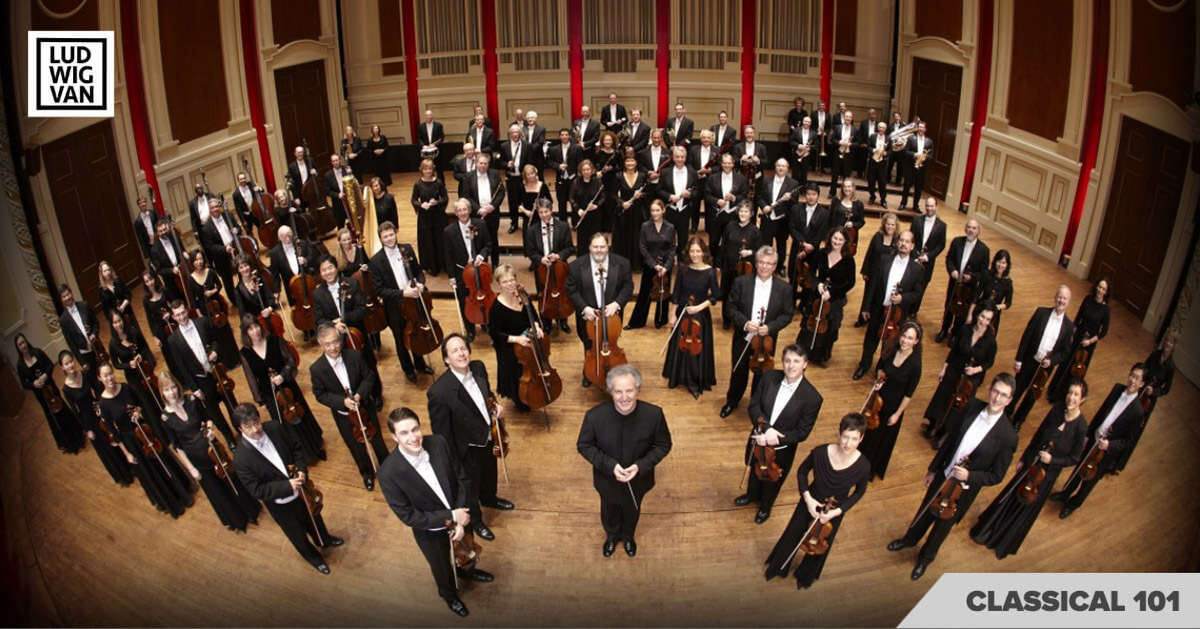
I recently had a discussion with a friend who asked about the difference between the term chamber, philharmonic, and symphony orchestra. “What makes one a philharmonic and another a symphony orchestra, he asked? “Also, what is a chamber orchestra exactly?”
These are very good questions, and if you’re not sure, don’t feel bad, as even some of us the classical music world find it a bit confusing.
So, let’s clarify.
In essence, the differences between chamber, philharmonic and symphony orchestra are based on an understanding of the origins of the terms.
Firstly, the term orchestra simply means a group of instrumental musicians. That’s it! It can be used in any music genre. This is why we have groups known as the Brian Setzer Orchestra (big band) and the London Symphony Orchestra. Think of it as another word for group.
In classical music, the term “orchestra”, refers specifically to a group of musicians involving strings, woodwinds, brass, percussion and (sometimes) choir. But again, it is important to understand that “orchestra”, as a term, has no bearing on specific ensemble size or genre.
So does this mean a string quartet, string trio, or piano trio, are orchestras too? I’ll explain the term “chamber” in more detail in a moment, but these are examples of specialised ensembles that specify the blending of instrumental families. For example, a piano trio is an ensemble consisting of piano and two other instruments, usually a violin and a cello. So while you certainly could call them “orchestras”, they live more broadly under the category of “chamber music” or “chamber ensembles”.
Just to make things more complicated, “orchestra” also refers to a particular spot in the theatre where musicians perform on stage. This meaning comes from the Greek word ὀρχήστρα, which denotes the front part of a stage in ancient Greek theatres where Greek chorus’ would sing and dance. This is the meaning that concerts halls allude to when denoting main floor seating as “orchestra level seating”.
As for the terms “philharmonic” and “symphony”, both basically mean “harmonious music” and are used as namesakes to differentiate between different orchestras. For example, the “Greater Toronto Philharmonic Orchestra”, “Toronto Philharmonia Orchestra” and the “Toronto Symphony Orchestra” are all “orchestras,” but to avoid being confused with each other, they came up with swanky names. In and of themselves they are meaningless.
Where things get confusing is that a “symphony” also refers to a special kind of orchestral composition that is formally structured in four movements, and includes a movement using the sonata form. The classical symphony is a complicated topic and deserves its own post, so I’ll save that for another day.
The term “chamber”, like orchestra, is basically an adjective that denotes the space in which the music was to be performed. It comes from the French term chambre, meaning room.
In context, a chamber orchestra refers to an orchestra (a group of musicians) who play in rooms rather than full-sized concert halls. The acoustic limitations mean that chamber orchestras are smaller (up to 50 musicians) as opposed to a full orchestra (around 100). Of course, chamber orchestras can play in a concert hall, but a full orchestra would not be able to fit in a small room. The music between a chamber and full orchestra sounds very different due to the smaller number of instruments, orchestration, and acoustics of the performance space.
That’s it in a nutshell! I hope that clears it up for those of you who always wondered…
MORE CLASSICAL 101 HERE
LUDWIG VAN TORONTO
Want more updates on classical music and opera news and reviews? Follow us on Facebook, Instagram or Twitter for all the latest.
- THE SCOOP | Royal Conservatory’s Dr. Peter Simon Awarded The Order Of Ontario - January 2, 2024
- THE SCOOP | Order of Canada Appointees Announced, Including Big Names From The Arts - December 29, 2023
- Ludwig Van Is Being Acquired By ZoomerMedia - June 12, 2023



